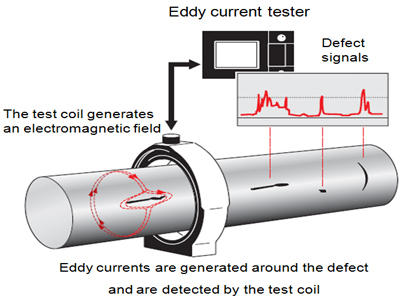Non-destructive testing technology does not destroy parts or materials, can be directly tested on site, and is highly efficient. At present, there are five main types of non-destructive testing: Ultrasonic Testing, Radiographic Testing, Magnetic Particle Testing, Penetrant Testing, and Eddy Current Testing).

Eddy current testing technology for nondestructive testing:
Penetration testing can detect surface defects in non-magnetic materials, providing a complementary means of magnetic particle detection. Penetration test method, which uses a liquid dye on the surface of the test material and keeps it on the body surface to a preset time limit. The dye can be a colored liquid that can be recognized under normal illumination, or can require special illumination. A yellow/green fluorescent liquid that appears. This liquid dye enters the crack in the opening of the material surface due to "capillary action". The capillary action always occurs during the dye staying process until the excess dye is completely cleaned. At this time, a certain developer is applied to the surface of the material to be inspected, penetrates into the crack and is colored, and then appears. Detectors with appropriate qualifications can analyze the traces of the appearance. Penetration testing can be widely used to detect surface opening defects of most non-absorbent materials, such as steel, non-ferrous metals, ceramics and plastics. For complex shapes, defects can be fully tested at one time. No additional equipment is required for on-site use. The limitation is that the detection procedure is cumbersome, the speed is slow, the reagent cost is high, the sensitivity is lower than the magnetic powder detection, and the buried defect or the closed surface defect cannot be measured.
-
 Sales@hata-ndt.com
Sales@hata-ndt.com -
 0086-0371-86172891
0086-0371-86172891










